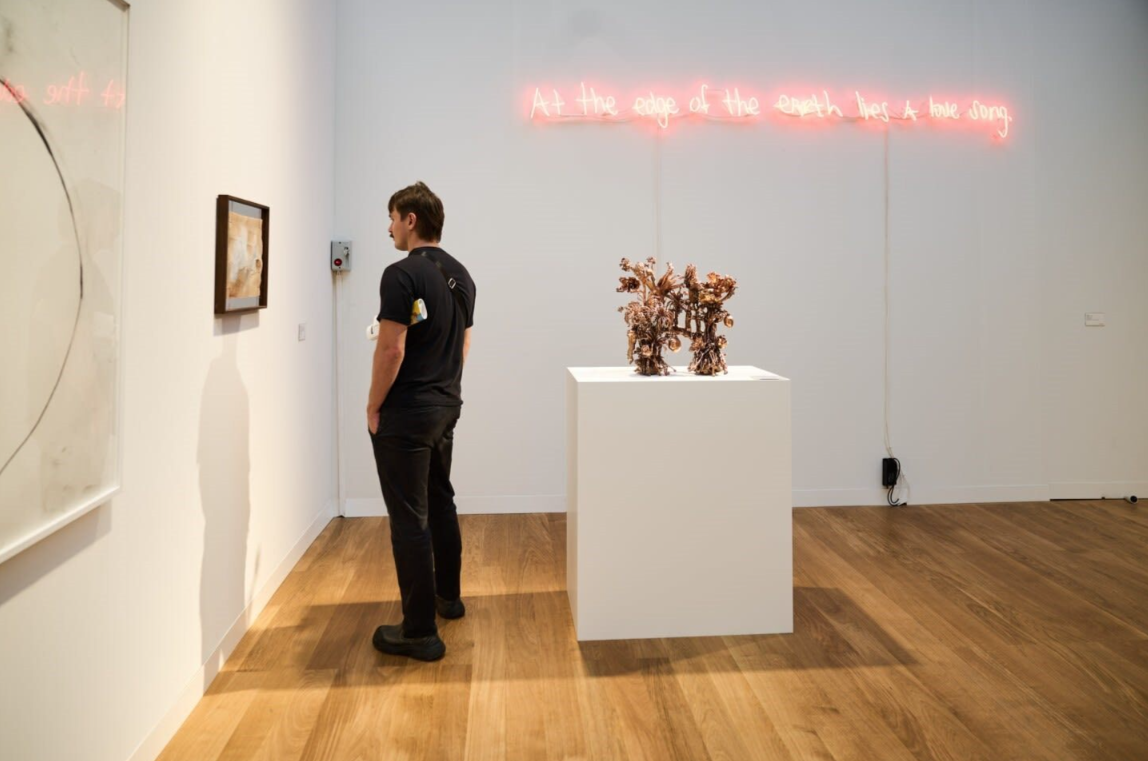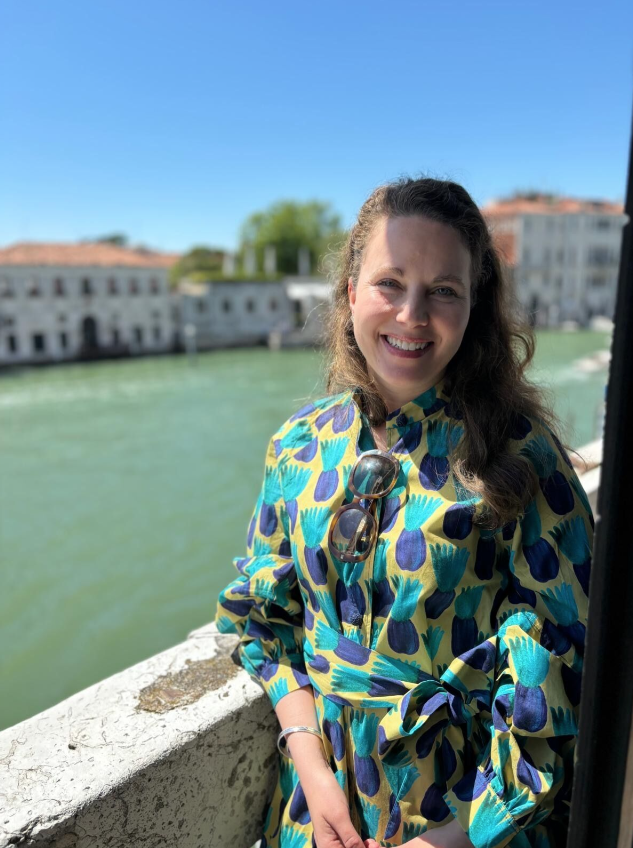There are few – if any – markets more dynamic, unpredictable and exciting than that of contemporary art. Which makes experience and expertise exceedingly valuable to would-be collectors. Professional art advisors Vincent Wu and Carola Wiese, talk to Jaz Kong about what to think about and what to avoid when building a collection

Everyone is talking about art these days, especially contemporary art. The road from art lover to art buyer, then moving on to become an art collector is not easy. How, one wonders, to even start? And for intermediate and mature collectors, how to navigate a changing economy?
With the global art craze easing off, now is the perfect time to pause and contemplate next steps. And who better to point us in the right direction than professional art advisors?
Vincent Wu, chairman and chief expert at Vin Investment International, also founder and CEO of Curator Style

You might know Vincent Wu as “the founder of those cafés whose walls are hung with so many artworks”. He launched Curator Style back in 2019, stunning the world with his vision to bring art into coffee drinkers’ lives and in the process making art a lot less intimidating than it had been before. Curator also provides art advisory services and private sales, and even curates exhibitions and artist collaborations. Businesses aside, Wu has an interesting background. After growing up in a family that loves art – and has collected several interesting items, including a rare Zhang Daqian hand-written menu for a banquet at his home – Wu earned his bachelor’s degree in Archaeology, Art History and Museum Studies before becoming an expert in Chinese Paintings and 20th Century Chinese Art at Bonhams Hong Kong.
Surprisingly, given his family history and academic background, Wu’s consultancy business mostly focuses on modern and contemporary art. “The art market trend is in the modern and contemporary art sector,” he says, “since the Chinese Classical Paintings and Calligraphy category took a toll around 2015-2016 and still hasn’t recovered yet.”
When it comes to his role as an art advisor, Wu says, “The major task is to give collectors good advice with our own in-depth knowledge in art pieces and the art market. Knowing collectors’ intention for short- or long-term investments is the first step, then we give them proper suggestions. Another key duty is the ability to source nicer works for them. Chances are the artists they fancy have good pieces, and also great pieces. Advisors should be able to build a network to locate good- quality works at a reasonable price for their clients.”
What matters most to Wu is whether his clients enjoy the process. “Collectors do grow over time, and often develop a different taste or mentality over the years,” he says. When it comes to collecting, “the first consideration for the collector has to be whether they like the work, because there’s no guarantee on the monetary value even for a long-term investment. They’ve got to enjoy the artworks first, then they’ll be more willing to spend time studying the category and eventually develop more sophisticated tastes.”
Wu believes the investment game goes beyond a piece or collection of work, and that the artists themselves are part of the decision as well. “To build a healthy and sustainable collection, first you have to pick good artists – considering not just their talent, but also their character, whether they’re open and humble, or if they’re too arrogant. For an artist to make it, their skills matter, of course, as does the uniqueness of their artistic expression. But it also depends on galleries and curators and a lot of other factors as well. Whether a young artist is humble enough to work with the world is a determining factor.”
As for the difference between art investment and appreciation, Wu explains with the help of Picasso. “These can be two entirely different perspectives. Take Picasso as an example – an investor might not fully understand his works or his life, but the prices have been going up and are still on the rise. Does that someone truly appreciate the artwork? Maybe not. But it can still be a good investment.” That probably is the advantage of a democratic market. It’s open for all with little regard for whether one is an admirer or investor.
Also see: Winners for the Standard Chartered Weather Photographer of the Year 2024
Carola Wiese, senior advisor, Art & Collecting, at UBS

“Art provides insight into our complex and unpredictable world. It brings people together, opens conversations and changes perspectives.” This is a quote found on the UBS website, and for a financial institution to talk about the power of art, it’s safe to say the Swiss bank is indeed visionary. UBS has been a partner of Art Basel for over 30 years, with the initial collaboration formed back in 1994 when the bank became the lead partner for the original Art Basel in Basel, Switzerland. The partnership helped both parties rise to the top of the art world – Art Basel became one of the most important art events in various regions around the globe, and UBS became inextricably associated with art finance.
Being an art advisor at a big corporation is very different from being one at a small, individual company. For Carola Wiese, senior advisor of Art & Collecting at UBS, it means focusing on building a legacy for her clients. “Our role at UBS Art Advisory is to offer strategic guidance to clients in building and managing an art collection and building a legacy plan,” she says. “Legacy planning has become increasingly important to our clients as the Global Wealth Transfer gains momentum. Our latest UBS Global Wealth Report 2024 shows that over the next two decades, US$84 trillion is expected to change hands, both vertically – through wealth passed down from older to younger generations – and horizontally, with wealth passed on to spouses. This transfer is not
only likely to influence the tastes and preferences of collectors, but
will foster new and diverse trends within the art world. With this context in mind, it’s important to look beyond the trends, as every period has its own unique characteristics, importance and values. What remains significant will be determined over time, especially when speaking about contemporary art.”
While talking about art finance and the monetary value of art, Wiese also shares a more personal side that reveals how passionate she is
about art. “I believe good art challenges you to open perspectives and conversations,” she says. “Art is a dynamic pursuit, and you never stop learning! Paired with a strategic approach, you’ll stay focused and confident.”
The same philosophy can be applied when it comes to investment versus appreciation. “Collecting art is best driven by a curiosity for discovering new ideas and the desire to leave a lasting legacy,” Wiese says. “We do not advise our clients to view art as an investment, although some benefit from financial appreciations over time. First and foremost collecting is a passion pursuit that pays ‘emotional dividends’, enriching lives.”
For collectors, no matter where they are in their journey, Wiese says, “Managing your collection is a craft that demands dedication, insight and above all, passion. It’s this passion for art that is the most enduring trend and will continue to strengthen the market in years to come.”
With that in mind, here are three solid pieces of advice to put in your pocket: do your research, avoid hurried decisions.
Also see: Art advisors on what to consider when building a collection (part 1 of 2)





